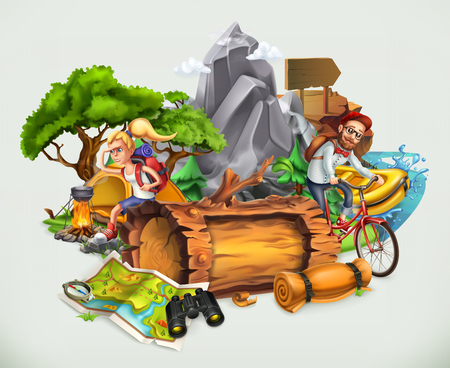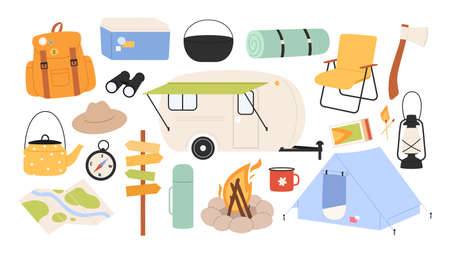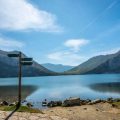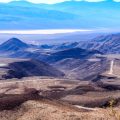1. Understand the Risks of Wildlife Encounters
When youre heading out for a camping trip, its important to know that youre stepping into nature—home to many wild animals. Understanding the types of wildlife that live in the area where you’ll be camping is the first step to keeping yourself, your group, and the animals safe.
Common Wildlife You Might Encounter
Different regions in the U.S. are home to different kinds of wildlife. Heres a quick overview of animals commonly found near popular camping areas:
| Region | Common Wildlife | Potential Risks |
|---|---|---|
| Western U.S. | Bears, mountain lions, raccoons | Bears can damage property if they smell food; mountain lions are rare but potentially dangerous |
| Eastern U.S. | Black bears, raccoons, foxes | Bears may enter campsites if food is not stored properly |
| Southwest | Coyotes, snakes, rodents | Rodents can chew through gear; snakes can be venomous if provoked |
| Midwest | Skunks, deer, bears (in northern areas) | Skunks may spray if startled; bears pose a risk if food is accessible |
Why Food Smells Matter
Wild animals have an incredible sense of smell—bears, for example, can detect food scents from over a mile away. Even sealed or packaged items like canned goods or deodorant can attract them. That’s why it’s so important to manage all food-related items carefully when you’re at your campsite.
Items That Can Attract Wildlife:
- Leftover food or crumbs
- Coolers and storage containers (even if closed)
- Scented toiletries like toothpaste or lotion
- Trash and used food wrappers
- Dishes with food residue
The Problem with Unintentional Feeding
If animals get used to finding food at campsites, they begin to associate humans with easy meals. This not only increases the risk of injury to campers but also harms wildlife by changing their natural behavior. Animals that rely on human food may stop hunting or foraging on their own, and some may even become aggressive. In many parks, “food-conditioned” animals must be relocated or euthanized for public safety.
Quick Tip:
A good rule of thumb is: If it smells like food or has touched food, store it properly!
By understanding which animals are around and what attracts them, you can take smarter steps to keep your campsite safe and peaceful.
2. Use Bear-Proof Containers and Food Storage Lockers
Keeping your food safe while camping isnt just about protecting your snacks—its also about protecting wildlife and yourself. One of the most effective ways to do this is by using certified bear-resistant containers or taking advantage of food storage lockers often provided at campgrounds.
What Are Bear-Resistant Containers?
Bear-resistant containers are specially designed hard-sided containers that are tough for bears and other wildlife to open. They are made from durable materials like polycarbonate or metal and feature locking mechanisms that animals cant easily manipulate. These containers have been tested and certified by organizations such as the Interagency Grizzly Bear Committee (IGBC).
Benefits of Using Bear-Resistant Containers:
| Benefit | Description |
|---|---|
| Wildlife Safety | Prevents animals from eating human food, which can harm their health and change their natural behavior. |
| Camper Safety | Reduces the chances of attracting bears or other wildlife to your campsite, keeping you safer. |
| Durability | Made to withstand harsh outdoor conditions and animal interference. |
| Portability | Many models are lightweight enough to carry on backpacking trips. |
Using Campground Food Storage Lockers
If youre staying at a developed campground, chances are they provide communal bear-proof food storage lockers. These metal lockers are large enough to store all your food, coolers, toiletries, and even cooking gear. Theyre usually located close to campsites for convenience but far enough from sleeping areas to minimize risk.
Tips for Using Food Storage Lockers:
- Always lock the door securely after placing your items inside.
- Store anything with a scent—not just food but also toothpaste, deodorant, and trash.
- Clean up spills immediately to avoid lingering odors.
Comparing Your Options
| Storage Method | Best For | Main Advantage |
|---|---|---|
| Bear-Resistant Container | Backcountry camping or areas without facilities | Portable and personal use |
| Campground Locker | Developed campgrounds with amenities | No need to bring extra gear |
No matter where you camp, using proper food storage tools is key to minimizing human-wildlife conflicts. Whether its your own bear-proof container or a shared locker at the site, taking the time to store your supplies correctly helps preserve nature—and your peace of mind.

3. Keep All Food and Scented Items Secure
When youre camping, its not just your burgers and marshmallows that attract wildlife — anything with a scent can draw animals to your campsite. That includes snacks, toothpaste, deodorant, dirty dishes, trash, and even pet food. Understanding what needs to be stored properly and where to store it can make a big difference in keeping your camp safe and wildlife-free.
Why Scents Matter
Wild animals like bears, raccoons, and squirrels have an incredible sense of smell. They can detect odors from miles away. Even if you think something doesn’t smell like food, animals might disagree. This is why it’s important to treat all scented items with the same care as you would actual food.
What Needs to Be Stored Securely
| Item Type | Examples |
|---|---|
| Food | Canned goods, snacks, fruits, leftovers |
| Scented Toiletries | Toothpaste, soap, sunscreen, lotion |
| Trash | Food wrappers, used napkins, empty containers |
| Cookware & Utensils | Pots, pans, grills that have touched food |
| Pet Items | Pet food, treats, bowls |
Best Storage Locations & Methods
The right storage method depends on where you’re camping. Here are some common options:
Bear-Proof Storage Boxes
If your campsite provides bear-proof lockers or boxes, use them! These are specifically designed to keep wildlife out.
Bear Canisters or Food Containers
If youre backpacking or there’s no storage box available, use a certified bear canister or scent-proof container. Keep them at least 100 feet from your tent and away from trails or water sources.
Hanging Your Food
If allowed in the area youre camping:
- Use a sturdy rope and a dry bag or stuff sack.
- Hang the bag at least 10-15 feet off the ground and 4 feet away from tree trunks.
Your Vehicle (If Allowed)
In some areas without bear activity, storing food in a locked car is acceptable. But remember: dont leave any food in plain sight or windows open.
A Few Extra Tips
- Clean up all food scraps immediately after meals.
- Don’t bring any food or scented items into your tent — ever.
- If youre unsure about local wildlife rules, check with the park ranger station when you arrive.
4. Follow Local Regulations and Leave No Trace Principles
When youre camping in the U.S., every park, forest, or campground may have its own set of rules about food storage. These arent just suggestions—theyre in place to keep both you and wildlife safe. Before heading out, take time to check the official website or contact the local ranger station for specific food storage guidelines where youll be staying.
Why Local Rules Matter
Some areas require bear-proof containers, while others might offer designated food lockers or even prohibit certain types of scented products. Ignoring these rules can lead to fines—or worse, dangerous wildlife encounters. Heres a quick overview of common regional regulations:
| Region | Common Food Storage Requirement |
|---|---|
| National Parks (e.g., Yosemite) | Bear-resistant canisters required |
| Backcountry Areas | Hang food 10-15 feet off the ground |
| Campgrounds with Lockers | Must use provided metal food lockers |
Practice Leave No Trace Principles
The Leave No Trace (LNT) principles are seven simple guidelines to help protect nature during your outdoor adventures. When it comes to food storage, focus on:
- Plan Ahead and Prepare: Know what storage tools you need before you go.
- Dispose of Waste Properly: Pack out all trash, leftover food, and wrappers—never bury them.
- Respect Wildlife: Never feed animals, and store food so they can’t get into it.
Helpful Tip:
If youre unsure whether a container is considered bear-safe, check with the Interagency Grizzly Bear Committee’s list of approved products or ask park rangers directly.
Your Responsibility as a Camper
By following local regulations and practicing Leave No Trace, you help preserve the beauty of nature for future campers—and keep wildlife wild. Responsible food storage is one of the easiest ways to make a big difference during your trip.
5. Set Up Your Camp with Wildlife Safety in Mind
When youre out camping, how you organize your campsite can make a big difference in keeping wildlife away—especially from your sleeping area. Animals like bears, raccoons, and even rodents have an incredible sense of smell, so it’s important to set up your camp with safety and food storage in mind.
Use the “Triangle Setup” Method
A common and effective way to arrange your campsite is the triangle method. This means placing your cooking area, food storage area, and sleeping area in three separate points forming a triangle, each about 100 feet (30 meters) apart. This keeps food smells far from where you sleep and reduces the chance of animals coming close to your tent.
| Area | Purpose | Best Practices |
|---|---|---|
| Cooking Area | Where you prepare and cook meals | Set up downwind from your tent; clean up immediately after meals |
| Food Storage Area | Where you store all food and scented items | Use bear-proof containers or hang food in a tree 10-15 feet off the ground and 4 feet from the trunk |
| Sleeping Area | Your tent or shelter for sleeping | Keep completely free of food, snacks, and scented products like toothpaste or deodorant |
Never Bring Food Into Your Tent
No matter how tempting it is to snack inside your tent at night, avoid bringing any food—or anything with a strong scent—into your sleeping area. Even wrappers or empty containers can attract curious animals.
Other Scented Items to Keep Out of Your Tent:
- Toothpaste and toothbrushes
- Lip balm and lotions
- Sunscreen and bug spray
- Deodorant
- Pots, pans, and utensils used for cooking
Clean Up After Every Meal
Always wash dishes immediately after eating, dispose of scraps properly (in designated trash or packed out), and wipe down tables and cooking surfaces. Even small crumbs or spills can attract wildlife overnight.
Select a Smart Campsite Location
If possible, choose a campsite that is naturally low-risk—away from animal trails, water sources (which attract wildlife), and areas with signs of recent animal activity like tracks or scat. The more remote you are from wildlife habits, the better your chances of staying safe.
Bonus Tip:
If camping in bear country, check if bear boxes are available at the site. These are metal lockers provided by parks for storing food securely—and they’re much safer than keeping food in your car or tent.
Organizing your campsite with these practices not only helps protect you but also protects wildlife by discouraging them from associating people with food.


